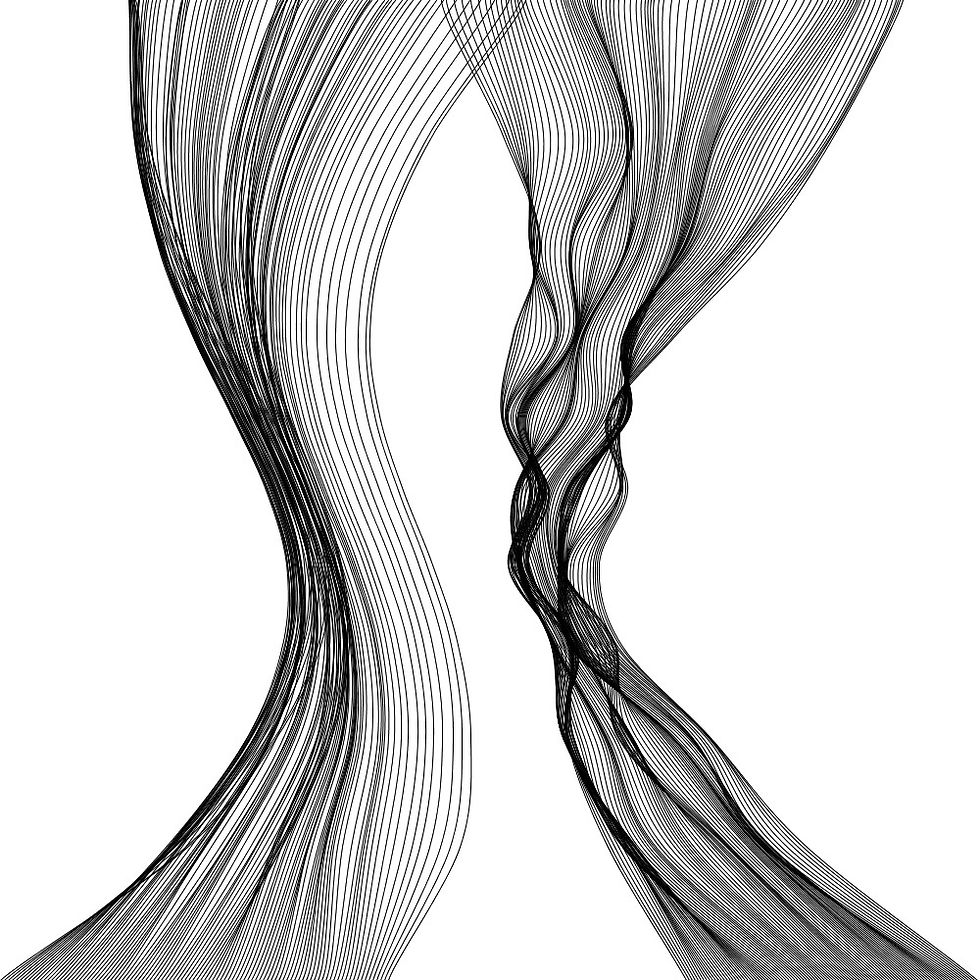Interview with Matthew Hughes
- Matthew Hughes
- Sep 26, 2020
- 3 min read

GH: We're so curious to find out: who are you, where are you from, and what do you do?
Hello, My name is Matthew Hughes and I live in Sheffield, England. Although I’m originally from Wales.
Currently, I work as a Data Scientist and ever since discovering generative art I make plotter art in my free time.
GH: What is the underlying philosophy behind your work?
My work doesn’t really have a philosophy behind it. My aim is just to produce visually interesting pieces. I enjoy the process of playing around with maths and code, and the feeling of discovery when my code starts producing beautiful outputs. I prefer working with a pen plotter vs digitally because I like having a physical piece of work for my efforts.
GH: Can you pick an artwork and describe your workflow?
I’ll describe how I made my ‘Noise Bezier’ pieces, which as you might expect use bezier curves and perlin noise. I originally got the idea for these from reading the processing documentation (always read the documentation kids) and finding the bezierPoint() function. The function allows you to get points along a given bezier curve and I then use perlin noise to offset these points.
I like to make as many parts of my code as possible into variables and just play around with different values. Often I will intentionally change variables to values that shouldn’t work just to see what will happen. Some of my favourite pieces have come about in this manner.
With large numbers of parameters in my code I can often get a wide range of outputs from the same underlying code. As an example the following images were all generated from the same program:





With the ability to generate large numbers of potential pieces a lot of what I do is curation or constraining the program to achieve a specific idea.
GH: What's been inspiring you lately?
Initially, I was inspired by a talk I saw on youtube by Tim Holman, Tyler Hobbs and Ben Kovach. Then Daniel Shiffman's videos and books were a real help in giving me a variety of skills with which to make art. I also enjoyed Anders Hoff’s (Inconvergent) essays on generative art.
Currently, I get a lot of my inspiration from other generative artists on Instagram and #plottertwitter, people like Des Clarke, Dan Catt, Piter Pasma, Geoffrey Bradway, Paul Rickards and Julien Gachadoat to name but a few of the great people in the community.
GH: Tell us about your setup. Where do you create? What tools do you use? I have a pretty basic setup at the moment, I’m using an eleksdraw which limits me to plotting up to a4. I hope to upgrade to a bigger plotter when I move to somewhere that will have space for one.
I’ve used a variety of pens, some of them have worked better than others. Fine tip gel pens allow for high definition details, and fineliners can allow for a range of colours and high contrast although can damage the paper if layered too much. The specific pen and paper details for any of my work is in the Instagram caption for that piece.

In terms of tools, everything I have made so far has been in processing, I use it to create sketches, save them as svgs and then convert them into gcode. Sometimes I use vpype by Antoine Beyeler which has been very useful for optimising plots that were coded in an inefficient way.
GH: What would you like to explore next?
Recently I’ve been experimenting with using my plotter to draw negatives and make cyanotypes, it has been pretty hit and miss so I’m hoping to improve and share some of these. I've also been fortunate enough to have some of my designs engraved on metal using a laser cutter which has gotten me interesting in getting one for myself once I move into somewhere with space for one.
– Matthew Hughes, Sheffield, England






Step into the exciting world of Block Breaker and enjoy pure, unfiltered fun! Swipe your paddle to smash all the blocks and release some stress. As you advance, the challenges escalate, offering a thrilling experience in this Block Breaker game. Come and play Block Breaker unblocked for a journey of breaking free!
People say it’s repetitive, but every match Agar io has its own story — underdogs rising, big players getting outplayed, alliances forming and crumbling.
SLOT GACOR, SLOT88, SLOT THAILAND
SLOT GACOR, SLOT DANA
SLOT GACOR, SLOT GACOR